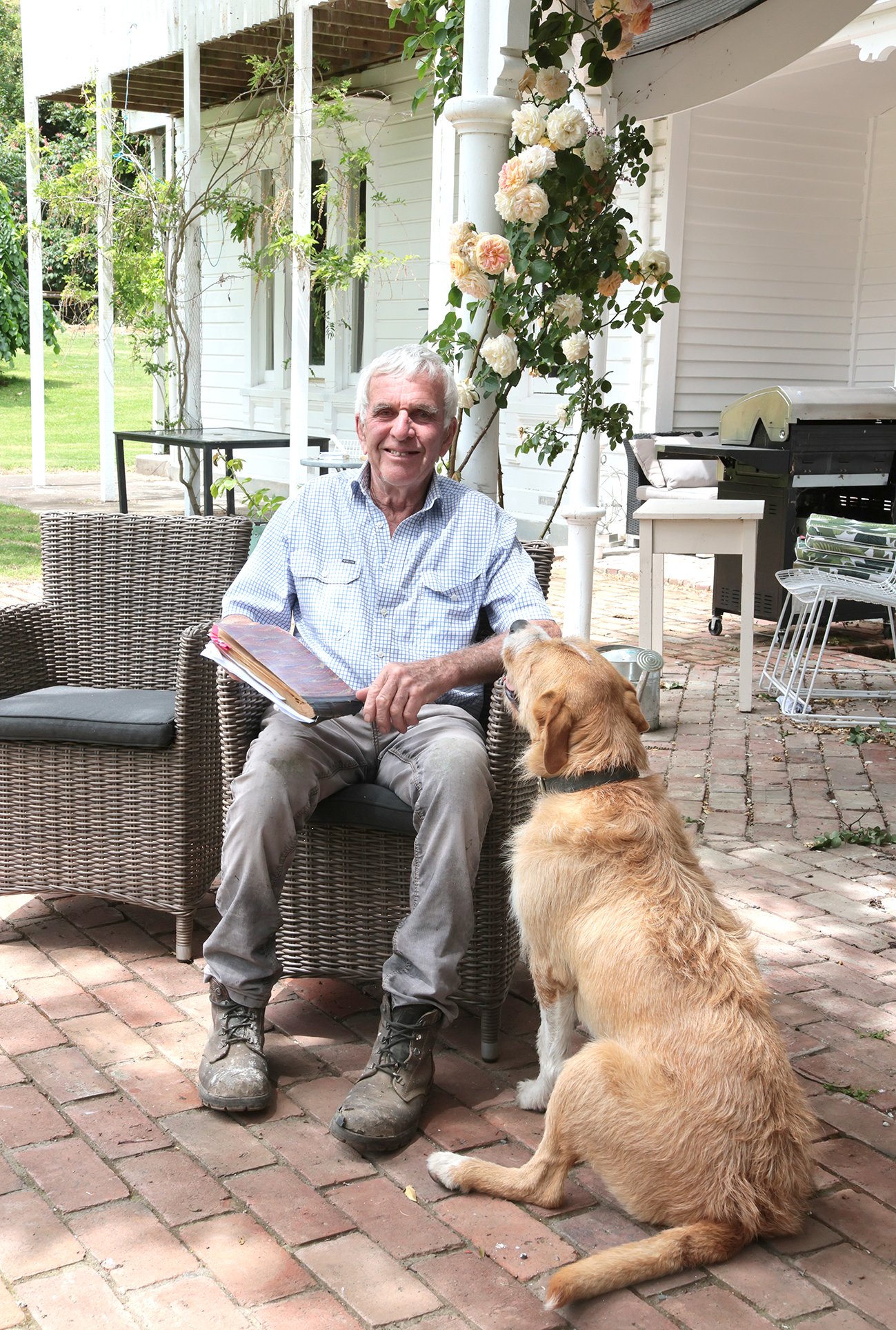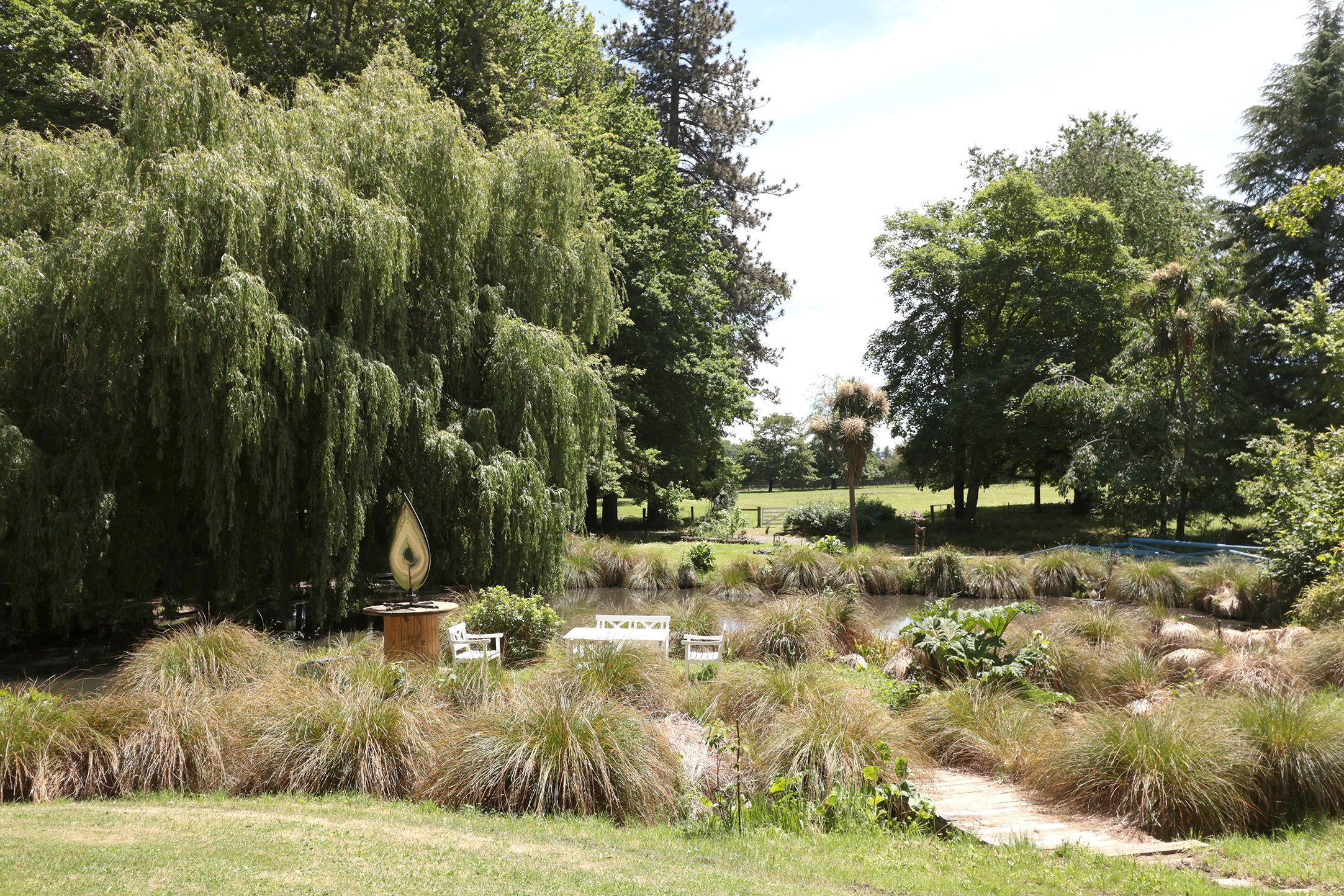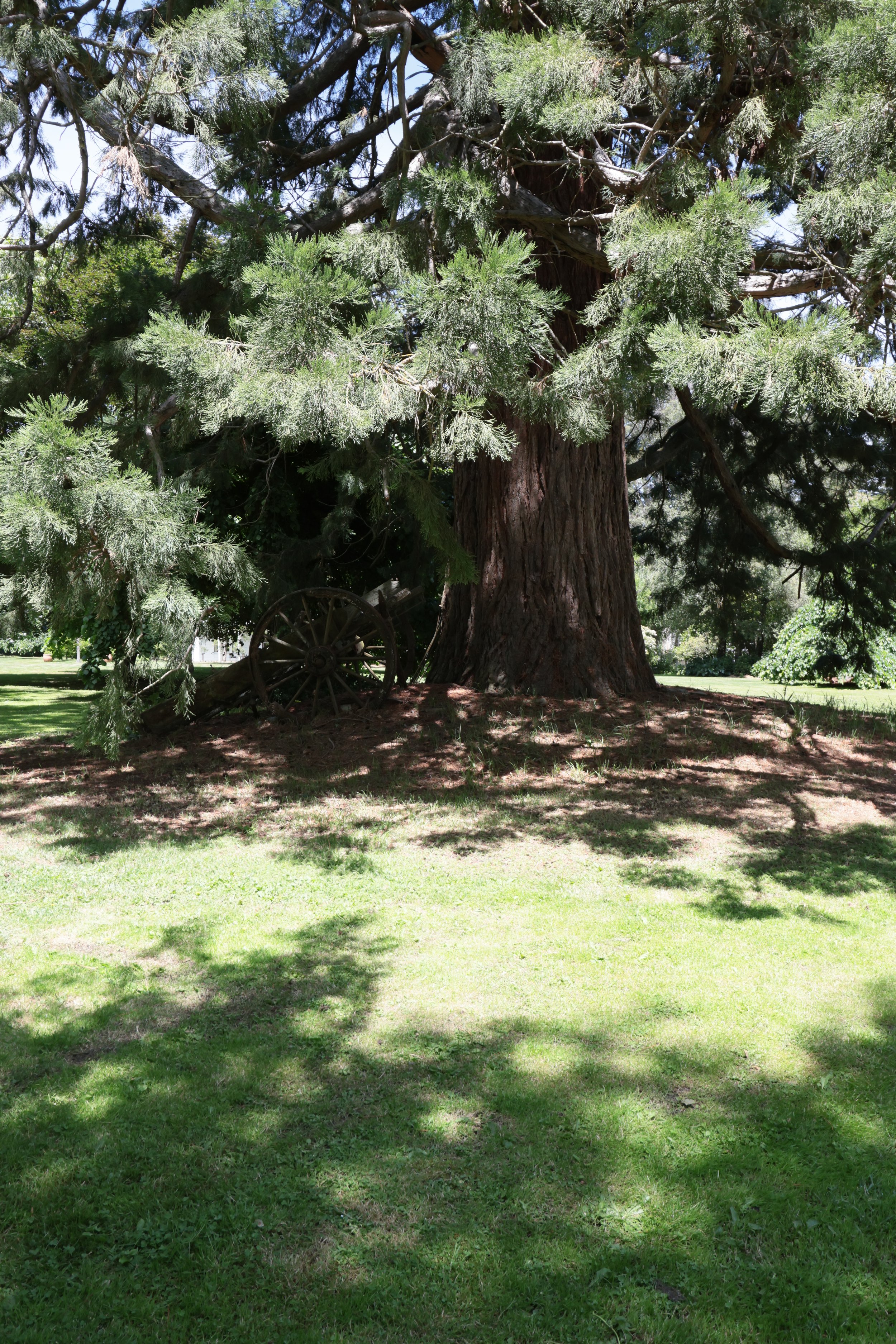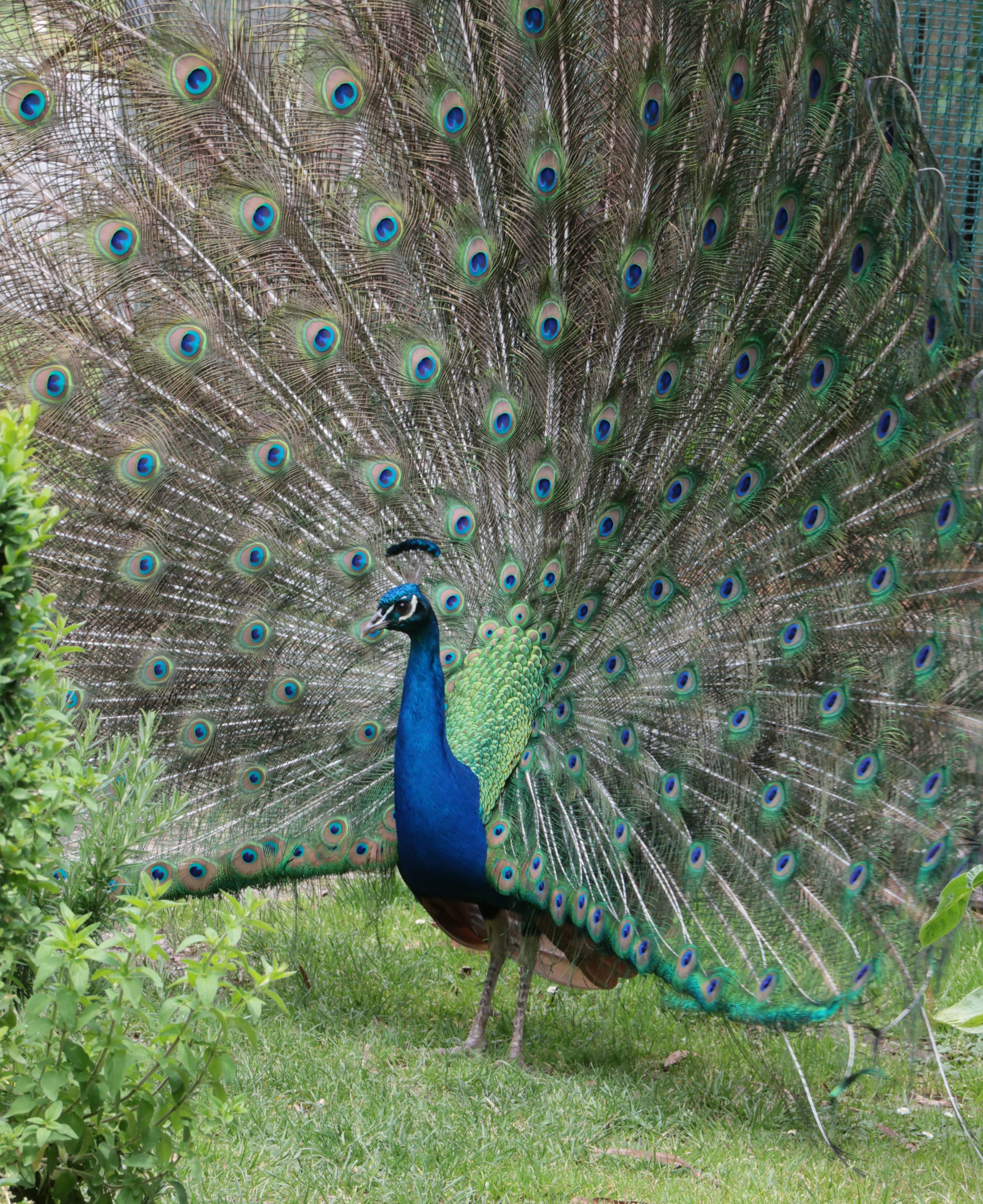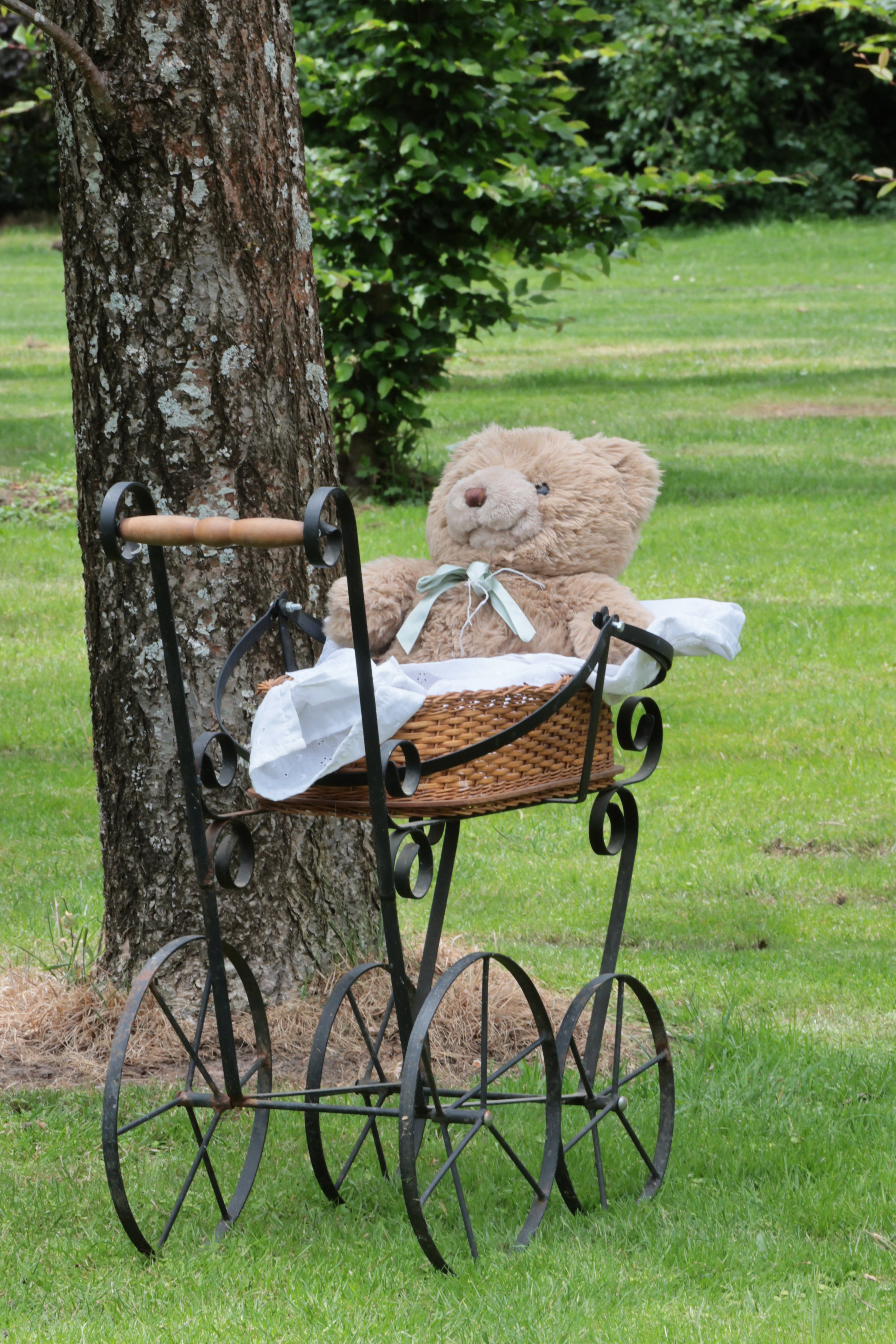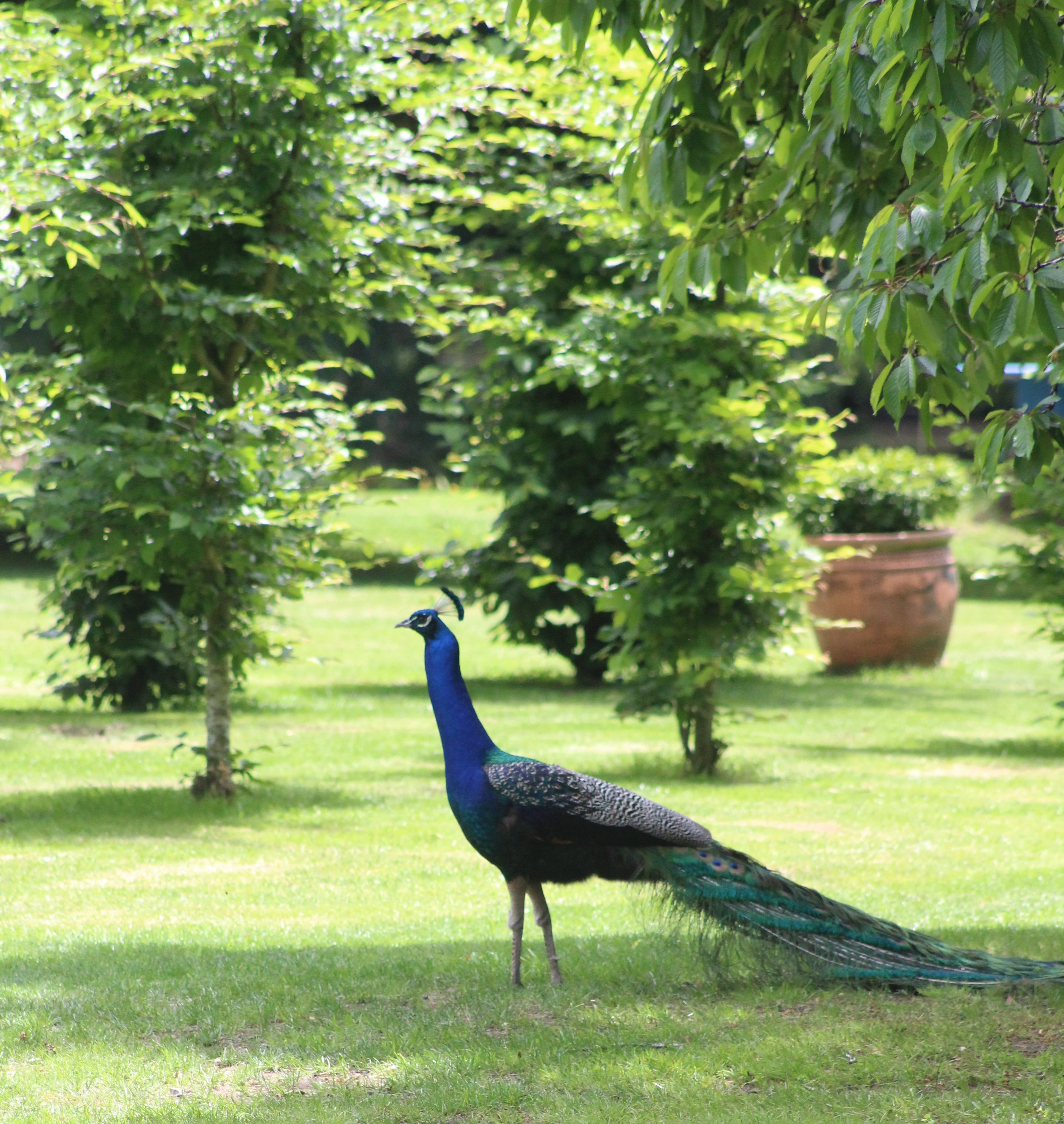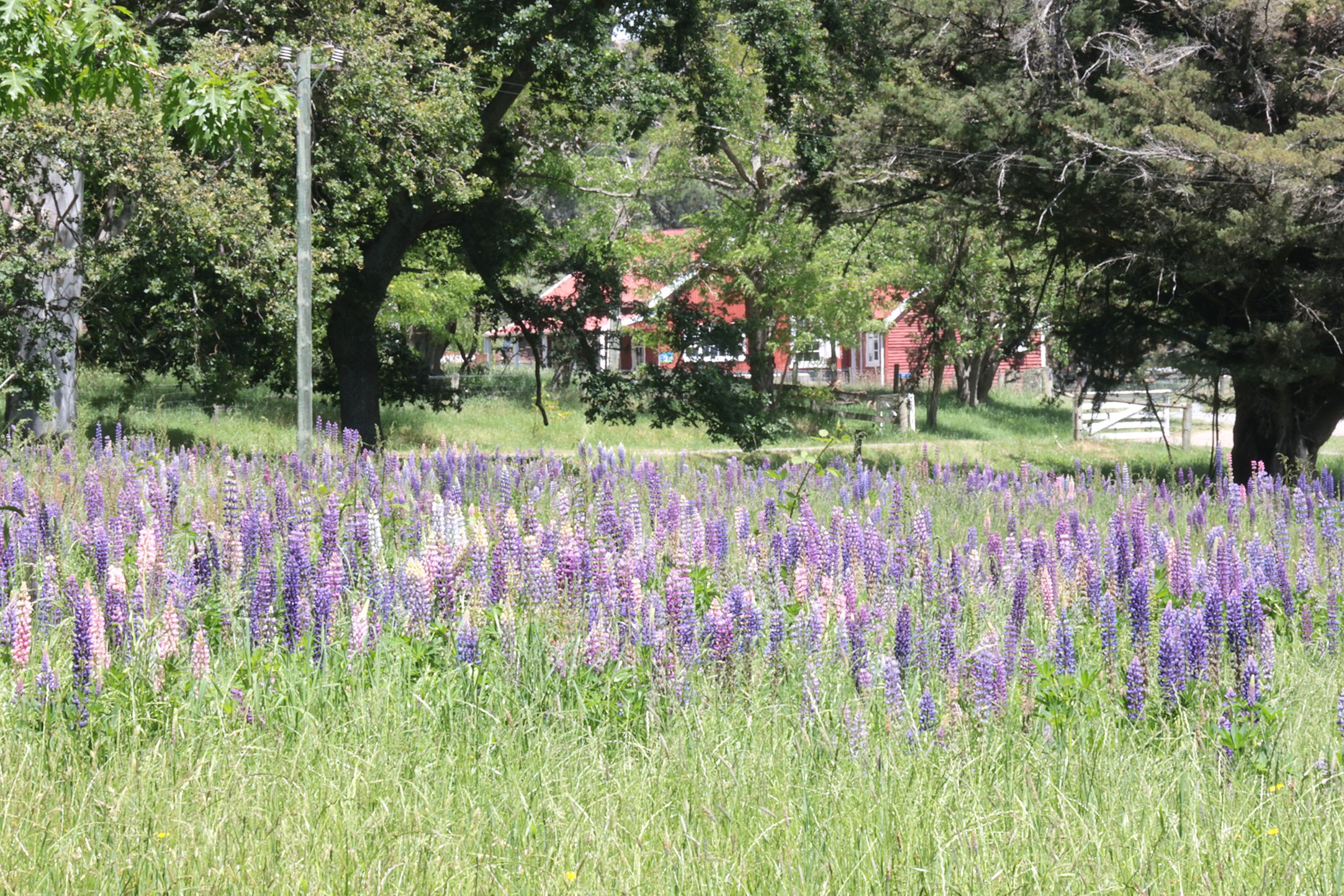A Hundred Year Old Homestead
An old hospital style bed is suspended high in a tree and a hand-painted sign points to the “Day Bed”. Perched on a fence nearby a peacock shrieks before stalking off into the shady undergrowth. Trees tower overhead and sheds and undergrowth tumble up the hillside.
words: Pattie Pegler
images: Dorothy McLennan
Arriving at Kaiwara Homestead is like stepping into another world. In a good way. Current owner, Bruce Johns, strolls out through the brick courtyard to greet us with his dog padding along behind.
Stepping inside the entrance hall with its tiled flooring, large timber pillars and original vaulted ceilings of rimu and stained glass it certainly has a sense of grandeur. But there’s something far more striking, the sense of a home and history. This is no fussy modern mansion – it’s a working home. There’s a rocking horse and chest of drawers; there’s a mish mash of unmatched chairs; there are family photos and artworks and old maps on the wall.
The homestead was originally built in 1886 and completed around 1900 when Walter Macfarlane was the owner of the then 25,700 acre country station.
Bruce and his late wife, Audrey, bought Kaiwara in 1996 and their two sons now oversee an Angus stud and dairying on the land. A downstairs room is hung with Corriedale and Angus memorabilia, Bruce wanted to make this his office at one point he tells us, but his wife thought it was too chilly. He shows us a cellar under the house with a couple of dusty wine bottles stored away.
A small home office room at one side of the house is where farm workers would have picked up their wages each week, says Bruce. He is a fantastic guide to this house – immersed in its history and happy to share his knowledge and recollections of living and raising a family here.
The house opens out onto a brick verandah and a gently sloping garden area of around three acres. “My wife loved the garden,” Bruce tells us as we walk through shady areas with paths surrounded by hostas and ferns. There are quirky sculptures, some made from old tractor track; trellises; roses; ponds and some geese nesting near a fenced off area.
“We thought they’d eat the weeds,” says Bruce with a laugh. “But they’re just sitting on a nest.”
Everywhere you look there is something to draw the eye. The tall trees at the centre of the garden are some of the original specimen trees planted around 1900.
On a gentle slope at the back of the house stands the iron frame of the old Victorian fernery – recently uncovered. It had its own boiler room to keep things warm for exotic plants and at one end a small room with dusty wooden rafters, is hung with certificates for flower entries at the local A & P Show.
Back at the house we sit on the old brick verandah and Bruce shows us the farmer’s diary from 1897 at Kaiwara. It’s a fascinating insight into daily life at the homestead.
Bruce reads out some entries one of which notes that a worker had a holiday on Christmas Day which makes us chuckle. There’s also a copy of the order book from 1906 with letters in it. One is a letter of enquiry. “Have you any young pigs?” asks the note and then. “One of the bags of potatoes you sent me was small rubbish.” Bruce sits back in his chair and grins. “Pretty good, eh?” he says, gesturing at the diary. The dog shifts position to soak up a little more sun on the verandah and the peacock struts across the garden.
It really is. Pretty good.
The Cook Shop
One of the historical buildings at Kaiwara is the distinctive red weatherboard of the Cook Shop. Much of the old building has been renovated as standalone accommodation, possibly for a B & B, but keeping to the original footprint.
Back in the day it would have been the main spot for feeding the many farm workers and shearers at this station. Now Oregon and oak timber walls and ceilings in the bedrooms are from timber milled on the property and a claw foot bath sits in front of a picture window over looking the rolling hills of the Hurunui.
Raising Funds
In November Bruce held an open day at Kaiwara Homestead with the aim of raising funds for the Cholmondeley Children’s Centre. It was a tremendous success with over 600 visitors and over $14,000 raised for the Centre – thanks to the many supporters and attendees. These funds raised will support the Cholmondeley Children’s Centre to provide a safe haven for Canterbury children in times of whānau stress or crisis. Cholmondeley is an independent charity and costs around three-million dollars per year to run. Just 20% of this figure is met by Government funding, and the remaining 80% comes from the generous support of the Canterbury community. Cholmondeley has been serving the Canterbury community since 1925 and in that time more than 30,000 tamariki have stayed at the centre


